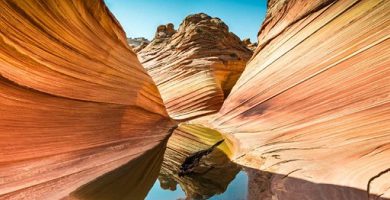What is cytoplasm?
We explain what the cytoplasm is and the regions in which it is divided. In addition, its different functions and how is its structure.
-
What is cytoplasm?
It is called the cytoplasm inside the cells (protoplasm), which occupies the area between the cell nucleus and the plasma membrane . It is a colloidal dispersion of a fluid called cytosol or halioplasma , with a granular appearance and very fine in its composition. It contains the various organelles of the cell and many of its molecular reactions occur.
The cytosol is composed of 70% water, without stable form or structure , and inside it is the cytoskeleton: a set of filaments of protein origin that gives internal order to the cell and allows its movement, connecting its different corners to the cell nucleus
Commonly, the cytoplasm can be divided into two regions:
- Ectoplasm . The outermost region of the same, close to the plasma membrane, and more gelatinous texture. It is usually involved in cell movement.
- Endoplasm . The innermost region of the cytoplasm, organized around the nucleus, and where most of the cell organelles are.
The cytoplasm is common to both eukaryotic and prokaryotic cells , although they contain different types of organelles.
-
Cytoplasm function

The cytoplasm fulfills various functions, the most elementary of which is to constitute the interior of the cell, its “body.” In addition, the different cellular organelles are housed there and communication occurs, and various cellular metabolic reactions take place, many of which occur in the endoplasmic reticles.
At the same time, the cytoplasm allows the mobility of the organelles and their replication in case of cell division, and it is next to the plasma membrane the last thing to separate during the mitosis process .
-
Cytoplasm structure

The cytoplasm contains the organelles of the cell, which are usually:
- Core . In eukaryotic cells, there is a well-defined nucleus that houses all the genetic material and has a key role in cell reproduction. The nucleus is wrapped in a membrane in turn and is surrounded by nucleoplasm, thus allowing the exchange of matter with the cytoplasm. Prokaryotic cells, on the other hand, have no nucleus.
- Plasma membrane . It is a membrane with selective permeability, which covers the cell and separates its inside from the outside, giving entry to desired substances and exit to metabolic wastes.
- Cell wall . Plant and fungal cells have a rigid cell wall, outside the plasma membrane, composed of cellulose (vegetables) or chitin (fungi).
- Mitochondria . They are the energy centers of the cell, where the synthesis of ATP (Adenosine triphosphate, the chemical energy molecule) occurs, using nutrients from the environment. This is known as cellular respiration.
- Chloroplasts . Plants make photosynthesis , so their cells have chloroplasts: organelles that contain chlorophyll for energy from sunlight, and which gives them their usual green color.
- Lysosomes . They fulfill the function of degrading the molecular material that enters the cell (heterophagy) or produced by it (autophagy), in what is known as cellular digestion.
- Golgi apparatus . Related to animal and plant cells, it acts as a transport channel for proteins and other substances, using a vesicle system that goes in and out of the cytoplasm.
- Reticulum endoplasmic . It is a series of tubules and sacks flattened and interconnected with each other, manufactured from fatty acids. It is classified into two different domains: the rough endoplasmic reticulum, covered with ribosomes to carry out the synthesis of cell proteins ; and the smooth endoplasmic reticulum, responsible for the synthesis of lipids, the absorption and release of calcium from the cell and other molecular functions.
- Centriole . It is a cylindrical organelle, consisting of three microtubule triplets belonging to the cytoskeleton, located in the cytoplasm (in the diplosome). These ducts serve for transport between organelles and as a guiding axis for the processes of mitosis or cell division.
- Chromatin . This is the name of the set of DNA and other proteins that are in the nucleus itself, that is, the cellular genetic material.
- Vacuole . These are deposits of enzymes , sugars, proteins or water, which are used for storage and various processes by the cell. In plant cells there is only one, large, in the center of the cell; The animals, on the other hand, have several small vacuoles in the cytoplasm.





